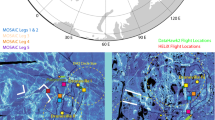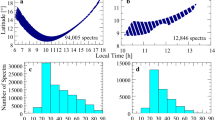Abstract
BECAUSE of the high atmospheric extinction in the ultraviolet at ground level, an airborne platform offers distinct advantage for planetary optical measurements in the wavelength region below 3,500 Å. The joint NASA–ESO Space Shuttle simulation programme (ASSESS) provided an opportunity for conducting such measurements aboard NASA's Convair 990 jet aircraft, at an altitude of ∼ 40,000 feet. The following summary of these measurements is a supplement to the published report on the ASSESS experiments1.
This is a preview of subscription content, access via your institution
Access options
Subscribe to this journal
Receive 51 print issues and online access
$199.00 per year
only $3.90 per issue
Buy this article
- Purchase on Springer Link
- Instant access to full article PDF
Prices may be subject to local taxes which are calculated during checkout
Similar content being viewed by others
References
Carli, B., Martin, D. H., and Puplett, E., Nature, 257, 649 (1975).
Author information
Authors and Affiliations
Rights and permissions
About this article
Cite this article
SIVJEE, G., ROMICK, G. Airborne ultraviolet studies of Venus. Nature 261, 31–32 (1976). https://doi.org/10.1038/261031b0
Received:
Accepted:
Issue Date:
DOI: https://doi.org/10.1038/261031b0
This article is cited by
-
Variability in the determination of total atmospheric ozone using remote sensing spectroscopic techniques
Pure and Applied Geophysics PAGEOPH (1978)
-
Ultraviolet absorbers in the Venus clouds
Astrophysics and Space Science (1977)
Comments
By submitting a comment you agree to abide by our Terms and Community Guidelines. If you find something abusive or that does not comply with our terms or guidelines please flag it as inappropriate.



